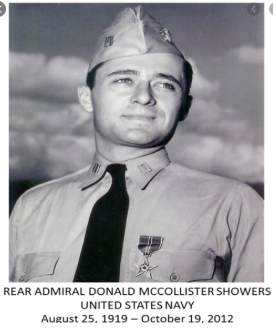D-Day and Midway

Hey. With everything else going on in this strange time, the events of the middle distance of history got obscured. Plague and intrigue. Hysterial politics and killer wasps. With all that to occupy our limited attention span, I think it is appropriate to make the effort to remember, even as some are calling for the abolition of familiar social things like police departments and social activities like working.
The jobs numbers reported this morning were surprisingly good, and it is possible that the pandemic shut-down will amount to the shortest recession in our history. Or at least until the next one. The press seems to need a crisis constantly, so that, along with our eventual demise and the taxation of a rapacious state, are things that will never go away.
But that is our land of uncertainty. It is easier to recall events equally perilous, but which have the advantage of being settled things. Which brings me around to thoughts of great events conveyed to me by one of the last men living to tell them.
It was a magical moment. I was sitting with Admiral Mac nearly a decade ago at the fabulous Willow Bar. The place bustled with energy, and Mac liked to soak it up. Life was good. We were all alive.
It was the night on the eve of the Battle of Midway, the Navy’s greatest triumph. I was embarrassed the significance of the date did not come up, and that was sort of strange, since the Admiral is one of the last people alive who contributed to the victory.
Nor did I remember the anniversary until someone mentioned how nice it was to see some Navy guys decked out in their whites. That was my favorite uniform, the open-necked white shirt with epaulettes and absurd white trousers, socks and shoes.
There was something dashing about it, the flash of color of the ribbons on the left breast of the shirt, and the coolness of the fabric against the warmth and humidity of the early summer Washington season.
Someone said that there must have been a ceremony to commemorate the 4th of June, 1942, the climatic battle in which the United States Navy decisively defeated the Imperial Japanese Navy’s attack against Midway Atoll. It was a victory of strategic impact, since the Japanese had intended to eliminate the United States as a strategic power in the Pacific.
Victory at Midway would have achieved a dual purpose: the elimination of American carrier-based airpower and the establishment of a new outer security perimeter for the Greater East Asia Co-Prosperity Sphere. IJN strategists considered it a real possibility that Washington would capitulate in the Pacific.
Fiji and Samoa would have been next, and the Aleutians.
The operational plan was pretty good, but wrong on so many other levels that it is hard to believe. People like Mac Showers managed to break the Imperial Navy’s JN-25 naval code. The key event was the legendary disinformation scheme hatched by Joe Rochefort’s merry band of electronic pirates about the status of the infrastructure on Midway island revealed the real objective of a multi-pronged attack.
The courage of one of the greatest of Americans, Admiral Chester Nimitz, to place his trust in the veracity of what his Spooks told him and place the scarce remaining ships and aircraft in harm’s way enabled the U.S. Navy to set up an ambush of its own. Four Japanese aircraft carriers and a heavy cruiser were sunk in exchange for one American aircraft carrier and a destroyer.
From that moment forward, the Japanese were on their way backward. The battle continued in the chaos of long-range combat for another three days, until the 7th of June, when the struggle officially went into the record books as a big win. A really big win.
It was not for another two years that the 6th of June provided the same symbolic date in the struggle against the Nazis. So, at this peaceful moment in rural Virginia, I ask you to remember what was given, and what was taken by those young people on the sea, on the beaches, and in the air.
The Allied invasion of Normandy consisted of two major operations: Neptune and Overlord. They commenced shortly after midnight on Tuesday, 6 June 1944, with the insertion of 24,000 American, Canadian, British and Free French airborne forces into occupied France. Many of those kids were dead by the time the assault began on the famous Utah, Omaha, Gold, Sword and Juno beaches. Can you imagine the rolling fear in those little boats? It began at 6:30 AM British Double Summer Time.
It was the largest amphibious invasion of all time, with over 160,000 troops in the landing force and another 195,700 Allied and merchant navy personnel in over 5,000 ships and landing craft.
Screen Shot 2019-06-06 at 11.16.20 AM
Uncle Dick on his way to work, 1944.
Uncle Dick would have been airborne from his base in East Anglia by then in his B-24 Liberator. Or almost, better said, one engine failed on take off and barely able to lurch into the air with his load of bombs. Dick would normally have aborted the mission, since without all four thundering Pratt and Whitney engines his bomber could not keep up with the formation.
“Screw it,” Dick growled to his crew on the intercom. “It’s D-day. We are going.”
It is worth remembering what those people gave that far-away week in the Pacific and on the English Channel. The Japanese never advanced again. In Europe, our young people confronted the hedgerows and the long walk to the Rhine that followed. It was tough bloody work in both theaters of operation, and despite the intensity of our current crisis, it is worth remembering.
With courage, anything is possible.
Copyright 2020 Vic Socotra
http://www.vicsocotra.com
